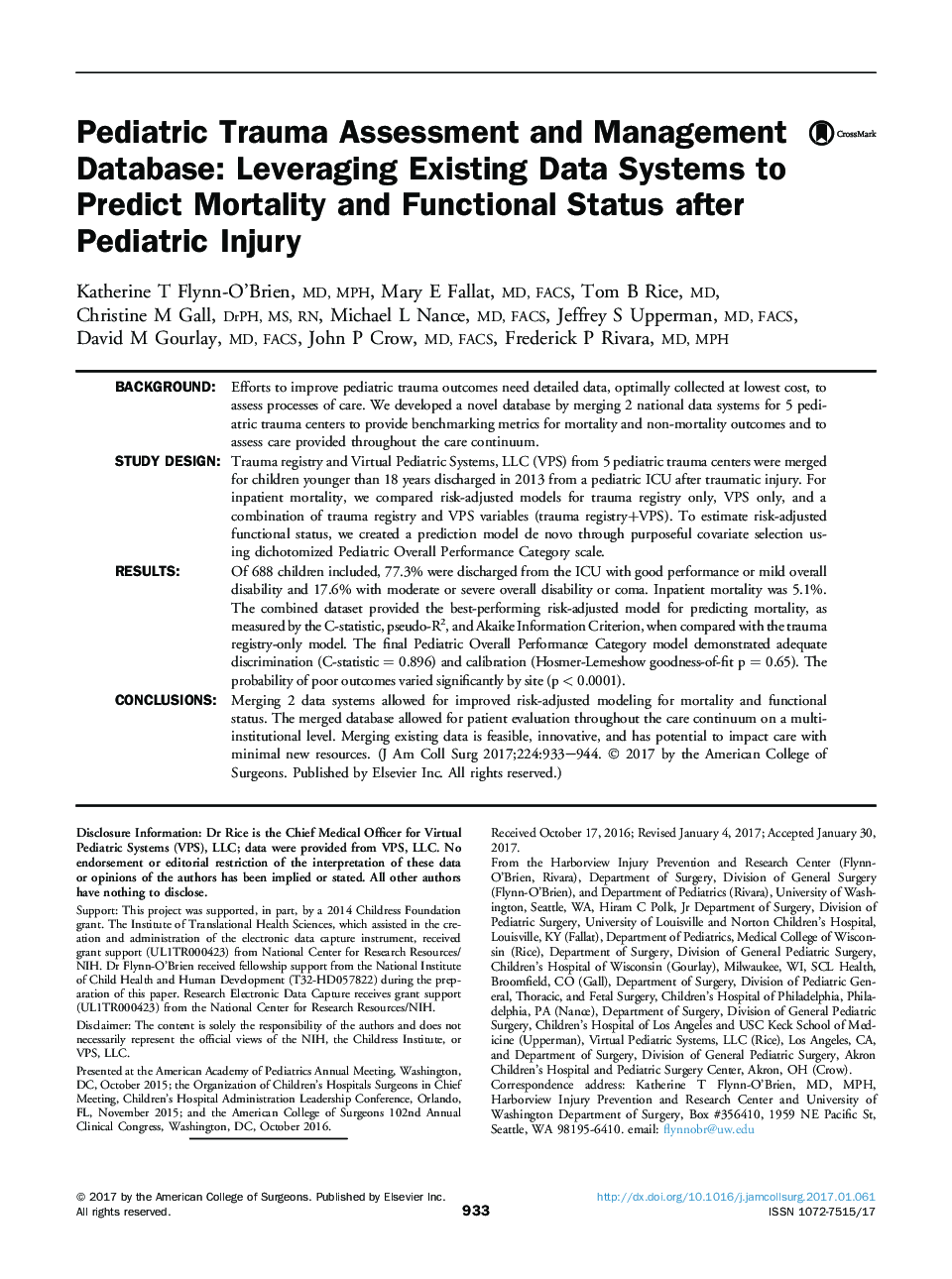| Article ID | Journal | Published Year | Pages | File Type |
|---|---|---|---|---|
| 5733016 | Journal of the American College of Surgeons | 2017 | 17 Pages |
BackgroundEfforts to improve pediatric trauma outcomes need detailed data, optimally collected at lowest cost, to assess processes of care. We developed a novel database by merging 2 national data systems for 5 pediatric trauma centers to provide benchmarking metrics for mortality and non-mortality outcomes and to assess care provided throughout the care continuum.Study DesignTrauma registry and Virtual Pediatric Systems, LLC (VPS) from 5 pediatric trauma centers were merged for children younger than 18 years discharged in 2013 from a pediatric ICU after traumatic injury. For inpatient mortality, we compared risk-adjusted models for trauma registry only, VPS only, and a combination of trauma registry and VPS variables (trauma registry+VPS). To estimate risk-adjusted functional status, we created a prediction model de novo through purposeful covariate selection using dichotomized Pediatric Overall Performance Category scale.ResultsOf 688 children included, 77.3% were discharged from the ICU with good performance or mild overall disability and 17.6% with moderate or severe overall disability or coma. Inpatient mortality was 5.1%. The combined dataset provided the best-performing risk-adjusted model for predicting mortality, as measured by the C-statistic, pseudo-R2, and Akaike Information Criterion, when compared with the trauma registry-only model. The final Pediatric Overall Performance Category model demonstrated adequate discrimination (C-statistic = 0.896) and calibration (Hosmer-Lemeshow goodness-of-fit p = 0.65). The probability of poor outcomes varied significantly by site (p < 0.0001).ConclusionsMerging 2 data systems allowed for improved risk-adjusted modeling for mortality and functional status. The merged database allowed for patient evaluation throughout the care continuum on a multi-institutional level. Merging existing data is feasible, innovative, and has potential to impact care with minimal new resources.
